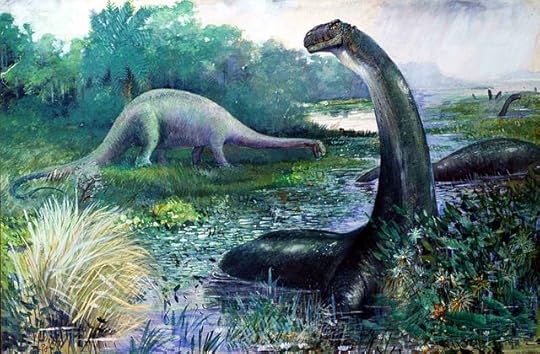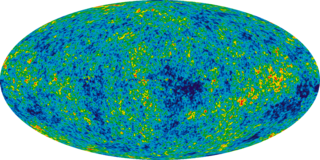Kate Rauner's Blog, page 20
August 6, 2021
Newfound Kingdom Says Tree of Life Bigger Than We Knew #Biology #genetics #microbiology
Organisms that don’t fit our tidy taxonomy seem to be underfoot.

Analyses suggest a very ancient lineage, which diverged from the other eukaryotes at such an early date that the group should be classified at the supra-kingdom level. In an article published in 2018, Lax et al. announced that a new hemimastigophoran species, Hemimastix kukwesjijk, had been discovered in a Nova Scotian soil sample, and successfully cultivated in the laboratory. Wikipedia
The sample that produced this micro-organism was collected on a whim:
While hiking in Nova Scotia on a cold spring day in 2016, Yana Eglit fell back from her friends to scrape a few grams of dirt into a plastic tube. (Such impromptu soil sampling, she said, is “a professional hazard.”) ScientificAmerican
My geologist friends tell me the same thing: there’s no way to go for a pleasant walk without ending up with pockets and sometimes arms full of rocks. At least a plastic tube is easier to carry.
While known to science, Hemi is dreadfully hard to culture in the lab, so no one had figured out where on the Tree of Life to stick the little guy. Using a new method (single-cell transcriptomics – isn’t that a great term?) Eglit and her fellow researchers sequenced more than 300 genes and were “stunned to find that hemimastigotes fit nowhere on the tree of life.” It sits in its own kingdom (at least for now) on a lonely limb.
This makes me think about possible extraterrestrial life. Since Hemi was so hard to pin down, should I be discouraged about finding alien life? Or pleased because each advance makes that search (on Mars, Europa, and elsewhere) more likely to succeed?
Hemi is “life as we know it,” a eukaryote. You are a eukaryote, and so are the living things you can see with your unaided eye, and many you cannot. Your cells each have a nucleus with DNA enclosed in a membrane. It would be easy to get a sample from you for DNA sequencing, because you’ve got lots of cells. The hemimastigophoran from Nova Scotia is a single celled organism.
More discoveries are waiting for us, maybe right under our toes.
July 31, 2021
Follow the Science – Not Easy To Do #COVID #COVID19
Science is the best way to learn about the physical world, but when a hot topic is rapidly evolving… beware. Science depends on studies, replication, peer reviews, and retractions. Popular media don’t follow all these pathways.

Here’s a list of COVID studies that have been retracted: 147 and still counting. Like me, you may find some you saw reported and took to heart. Only researchers in the field are likely to keep track of all of this, which makes it hard on us hoi polloi.
To provide perspective: Over 87,000 COVID papers have been published, and I got that number from last February. “It is an astonishing number of publications – it may be unprecedented in the history of science.” So 147 retractions isn’t very many, but some are on topics you’ve heard of: hydroxychlorquine, effects of vitamin D, and “JAMA Pediatrics has retracted a paper claiming that children’s masks trap high concentrations of carbon dioxide a little more than two weeks after publishing it.”
It’s easy to get an exciting report stuck in your head and never read about subsequent qualifications or outright debunking.
This level of activity is a good thing – the field of COVID research is active and scientists critique each others work. But it can be confusing to the rest of us. We’ll never figure it out by ourselves. It’s totally understandable if we each pick an expert to follow. Just remember that your expert (and mine) is only human, and if they’re proven to be wrong, that’s not your error and not your fault. Don’t let your emotions get wound up in someone else’s credibility.
When thinking changes your mind, that’s philosophy.
How Do You Change Your Mind?
When God changes your mind, that’s faith.
When facts change your mind, that’s science.
July 24, 2021
Brontosaurus is Back ! #dinosaur
If you’re a dinosaur lover of a certain age, you grew up with Brontosaurus. Sure, illustrations once showed this classic sauropod standing in a swamp, its long tail dragging behind, but we loved it anyway. Then, some killjoy decided Bronto’s fossils weren’t sufficiently different and – poof – it was gone.
 Poor old swamp dwelling brontosaurus – glad they got out of the mud
Poor old swamp dwelling brontosaurus – glad they got out of the mudWhat took my kids’ books so long to catch up? The Brontosaurus genus was named in 1879, and stood until 1903 when science decided those bones were actually the genus Apatosaurus, first described in 1877. Apatosaurus was named earlier and therefore took precedence.
I assure you I was not around before 1903. Why did Brontosaurus get referenced for so long? Maybe because the translation, thunder lizard, is so cool. But a 2015 study (see how much faster that percolated up to my notice) has saved the day.
Brontosaurus can be distinguished from Apatosaurus most easily by its neck, which is higher and less wide,” says lead study author Emanuel Tschopp, a vertebrate paleontologist at the New University of Lisbon in Portugal. “So although both are very massive and robust animals, Apatosaurus is even more extreme than Brontosaurus.” Pocket
Of course, none of this agonizing over semantics changes anything about the fossils or the creatures that once walked the earth. Perhaps we humans fuss too much over words. I’ll focus my joy on the diplodocids getting their tails up out of the mud… in my mind, that is. The dinosaurs wouldn’t care what I think even if they were still tromping around out there.
Scientists are Only Human – Drat #ResearchCulture #researchers
Don’t we all love something new, unexpected, and exciting? Scientists do too, and that can lead to bad science.

You may have seen a recent report analyzing information on Twitter that showed false news spreads faster and reaches more people than verified true claims. “Novelty is a culprit: the false news that spread rapidly online was significantly more unusual than the true news.” If you thought that only applies to the hoi polloi and social media, guess again.
Both academics and laypeople experience surprises as more interesting (and certainly more entertaining) than the predictable, the normal and the quotidian. [Results reported] in Science Advances are disturbing: papers that couldn’t be replicated were cited more than average, even after the news of the reproducibility failure had been published, and only 12 percent of postexposure citations acknowledged the failure. ScientificAmerican
If no one else can get the same results you did, you probably did something wrong. This can happen even when you are trying to be diligent. As Richard Feynman said:
The first principle is that you must not fool yourself – and you are the easiest person to fool.
Or, as a corollary to Murphy’s Law puts it, no matter how hard you try, you will fail to find your own mistakes. Fortunately, the first yahoo who wanders by will spot them immediately.

New studies based on flawed old studies aren’t likely to advance knowledge. The most encouraging part of all this is that people are trying to improve the situation. Science has shown us, over and over, that our gut reactions, instincts, and even common sense can lead us astray. Science is still the best way to learn about the physical world, and that means supporting good, sound, well conceived and valuable research that may not inspire headlines screaming “break-through.”
Thanks to Scientific American for their article. You’ll find more on transparency, openness, and reproducibility – and on problems with academic reward systems – here. Thanks also to Retraction Watch, where you’ll discover how scientists stay true to their calling.
July 22, 2021
Antimatter, Not Just for Star Trek #astronomy #universe #cosmology
It seems reasonable that no significant amounts of antimatter exist in the universe. When matter and antimatter collide, they annihilate in a blast of energy. You don’t need a physics class to know that – Scottie on Star Trek told us so.
 Save us, Scottie
Save us, ScottieBut what if there are antimatter stars? Antistars would shine like a regular stars, but if the star’s gravity pulled in regular matter, the interaction would release a high-energy flash of light in a specific color of gamma rays. Has anyone seen clues to such a phenomenon?
In 2018, the Alpha Magnetic Spectrometer 2 (AMS-02) experiment on the International Space Station possibly detected several antihelium nuclei, suggesting that some original antimatter survived to form antistars and even antigalaxies. physics.apps.org
Where would antihelium come from? From the Big Bang? If a few atoms survived to wander into our instruments, there might be more. So what about gamma rays? Antimatter annihilation is only one source of such emissions, but the search began for just the right combination of frequencies and flashes. It’s a new hypothesis, so more data is needed, but there might be two antistars per million normal stars based on the Fermi Large Area Telescope.
I sure don’t want to visit such a star because I (or more realistically, my probe) would go poof. But it would be fun to know more.
July 16, 2021
Humans are Slow, Weak, and Squishy – Why Do We Survive? #wildlife #evolution
I live on the edge of the Gila National Forest. My neighbors include bears, bobcats, coyotes, an occasional mountain lion, and once (I’m pretty sure) I saw a wolf. Yet I walk the forest every day in safety. Why haven’t I been eaten?
 Yeah, the one standing up is way scarier
Yeah, the one standing up is way scarierEven more interesting from an historical perspective, why weren’t my ancestors eaten?
Like our ape relatives, our ancestors probably responded to a predator by joining together, making a lot of noise, throwing things (including feces) and jumping around like crazy creatures. Maybe it was often easier to pursue less rude prey.
What about our wonderful bipedal stance?
Bipedalism may make humans appear bigger [taller] and therefore more threatening. “It’s sort of like a bluff. It’s like, ‘I’m walking around; I’m tough; I’m showing where I am on a landscape.'” Predators see the upright stance and assume humans are tougher than we actually are. John Hawks, a paleoanthropologist at the University of Wisconsin-Madison
The need to leave humans alone got more urgent as we developed weapons, and perhaps today, generations of wildlife mommas have taught their offspring to avoid us. Also, we’ve made war on predators for centuries, and we’re winning. Their numbers are way down, so there are fewer chances for a human to become prey. Studies show that, in America, only an average of eight people are killed directly by wildlife each year, some by snakes. Snakes usually freeze and let us stomp on by, so bites are a clumsy accident. (Unless the snake is spotted and alcohol is involve. Alcohol consumed by the humans, that is, not the snake.) Car collisions with wildlife kill more people, and I could argue that’s humanity’s fault.
So I continue to hike in the Gila Forest without carrying even a pointy stick, secure in the knowledge that humanity’s terrorizing of predators past and present keeps me safe. If I catch a glimpse of a bear or a coyote, I consider it my lucky day. But I do give skunks the right-of-way.
July 10, 2021
Universe Getting Hotter – It Shouldn’t Do That #astronomy #cosmology #galaxy
When gas expands, it cools. The universe is expanding, so it should be cooling too. So scientists thought. So, dang it, why would it be heating up?
 The sky in microwaves, temperature fluctuations shown as color differences
The sky in microwaves, temperature fluctuations shown as color differencesFirst, what is heat? Especially out in space where there is so-close-to-nothing, we call it empty. Heat is a measure of the energy of whatever particles are under consideration, so even in a near vacuum, there is heat.
According to new research led by the Center for Cosmology and AstroParticle Physics (CCAPP) at Ohio State University, it appears that the Universe is actually getting hotter as time goes on.
After probing the thermal history of the Universe over the last 10 billion years, the team concluded that the mean temperature of cosmic gas has increased more than 10 times and reached about 2.2 million K (~2.2 °C; 4 million °F) today.
As the Universe evolves, gravity pulls dark matter and gas in space together into galaxies and clusters of galaxies. The drag is violent – so violent that more and more gas is shocked and heated up.” Science Alert
Collecting data from 10 billion years ago sounds like quite a trick, but keep in mind that light from sufficiently distant locations has been traveling for a really long time, and astronomers routinely study objects that are a really long way away, right back to the Big Bang.
It’s fun to see a science article quote poetry:
“Some say the world will end in fire, others say in ice.” Which of these will prove to be correct, and what implications it could have for life in the future, only time will tell…
July 3, 2021
Sonic Boom Becomes a Sonic Thump or a Sonic Puff, But Why Bother? #aircraft #airplane #supersonic
 Stamp commemorates the first super sonic plane
Stamp commemorates the first super sonic planePlanes first achieved supersonic flight in 1947, but so what? Sonic booms made flight over land impossible. People complained. Plaster and glass in homes cracked. Horses and turkeys died or went crazy. Tens of thousands of claims were filed against the Air Force, and the F.A.A. banned civil overland supersonic flight in 1973.
The Concorde, the supersonic passenger aircraft, could only fly at top speed over the ocean. It gave up in 2003. But if science can understand the boom, can engineers tame it?
What causes a sonic boom? Vibrations in the air create sound, and airplanes push waves of air in all directions as they fly. When the plane exceeds the speed of sound, it catches up to its own waves in front.
This single, merged wave reaches the ground all at once, creating a boom. A zone of low pressure follows—the trough of the wave—and then normal air pressure returns, creating its own sound. (Often, sonic booms go boom-boom.) Thunder is a sonic boom, caused by shock waves expanding around lightning bolts. Bullets cause sonic booms, as do the tails of whips. A plane causes a sonic boom not just once, when it breaks the sound barrier, but continuously for the entire time that it’s supersonic. The booms sweep over everything below. The New Yorker
As I imagine myself picking up dead fowl in my barnyard, I think, dammit, this can’t be allowed.
Technology has advanced, and engineers are developing better control over the waves a plane generates. A long pointy nose and specially shaped wings reduce the boom to a thump. Companies are working on such planes that might be allowed to fly over land. They wouldn’t be very big, maybe only 50 passengers.
Coast to coast flights will probably be the first supersonic routes airlines offer, and I live in America’s fly-over zone, under those paths. I’m not ready to tolerate a constant rumble like distant thunder so the rich and powerful can shave a couple hours off their travel time. But technology marches on. Is there a sonic puff in the future?
But will anyone care? Ground transportation can take longer than the flight, and add to that the two to three hours in advance you’re expected to arrive at an airport. So your six hour flight NY to LA becomes three hours. Big whoop. How much money is that worth to you? Although, I suppose we’ll see billionaires with private supersonic planes in our future. I plan to write my Congressional Representative: only sonic puffs, please.
Full disclosure: I don’t actually raise birds of any sort, but I feed wild birds, and my neighbor has chickens.
Thanks to The New Yorker for their article.
June 20, 2021
No Amazon Prime Needed for Free Scifi Adventure on Saturn’s Moon #AmazonPrimeDay #AmazonDeals #scifibooks

Let’s all celebrate Amazon Prime Days whether we have Prime or not. Titan is a free-to-everyone kindle June 21 and 22. No Prime needed, and always waiting for you on Kindle Unlimited.
A hijacked spaceship…
kidnapped colonists…
Can they escape disaster?
Cobbling their life support systems together isn’t enough. A young engineer must defy the leader to survive, or humanity’s new beginning will end in tragedy. Click Now for Your Copy.
Journey into our near future – a story filled with real science and speculative possibilities. Walk under a hazy orange sky. Explore the alien shores of hydrocarbon lakes. Climb cliffs of ice frozen as hard as granite. Search the Saturn system for vital resources. Scientists say Titan is the best place for a human colony, but who would settle here? And why?
“Twists and turns keep things moving… young, engaging characters.” Diane Goudreau
“Faced with overwhelming challenges of the harsh environment on Titan… We are pulled into a dark spiral.” June Randolph
“Loved the characters.” Irishgrammy
“The cult aspect of the series is fascinating, added an interesting dynamic. Kate is an expert at world building.” Mary E. Young
This tense tale delivers on the ambitious premise, a science fiction psychological thriller.
June 17, 2021
Star Burps Dust #astronomy #Betelgeuse
I waxed poetic while holding my breath in late 2019, waiting for the star Betelgeuse to go nova. It was dimming in a most-notable manner, which was odd and exciting. Then it brightened again, seeming to thumb its photonic nose at us all.
The mystery of what this red giant was up to seems to be solved. While not as exciting as a supernova, it is pretty nifty. The actual astronomical images are available online, but this artist’s rendering is eye-catching.
Hubble Space Telescope’s UV data… combined with some timely ground observations indicated that a big burp that formed a cloud of dust near the star may have caused the star to get darker.
“With Hubble, we could see the material as it left the star’s surface and moved out through the atmosphere, before the dust formed that caused the star to appear to dim,” said Andrea Dupree, an astronomer at the Harvard-Smithsonian Center for Astrophysics who made those observations. She is also a co-author on the new paper. ARS
I’ll have to hope for a Big Boom somewhere else.



